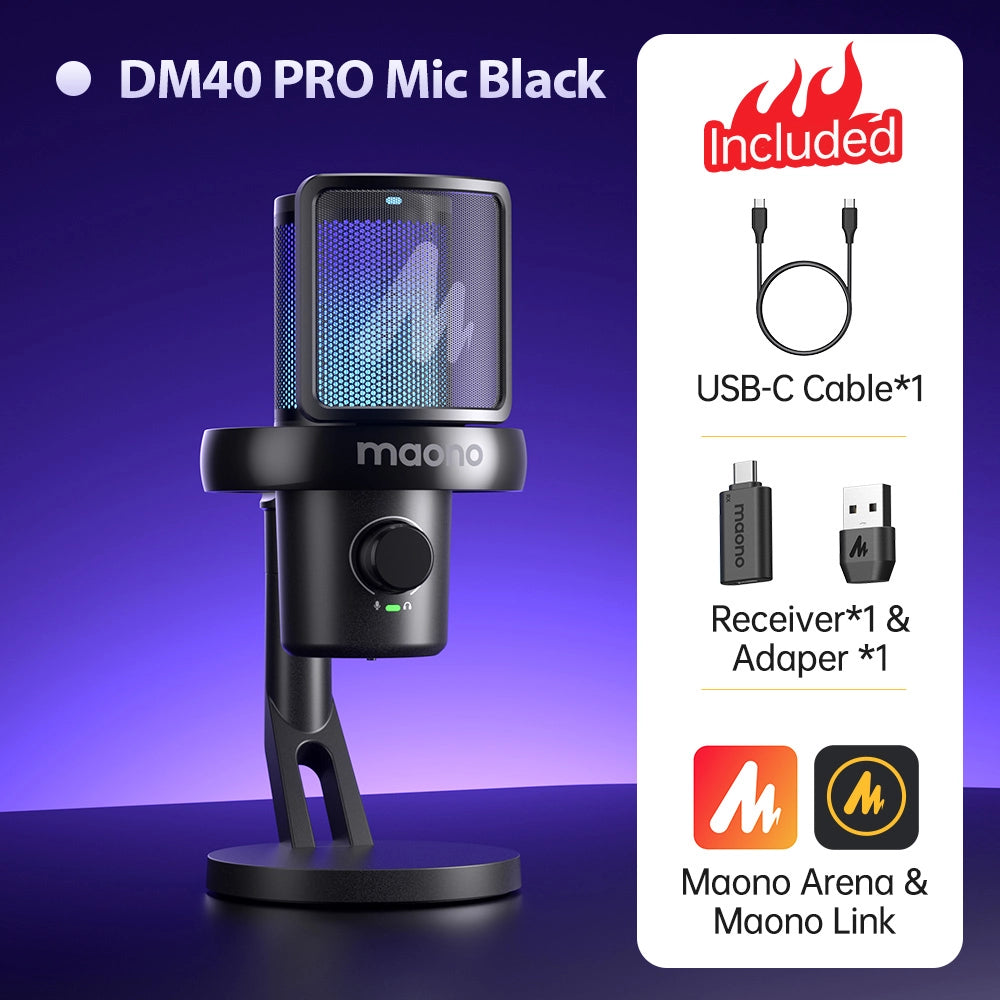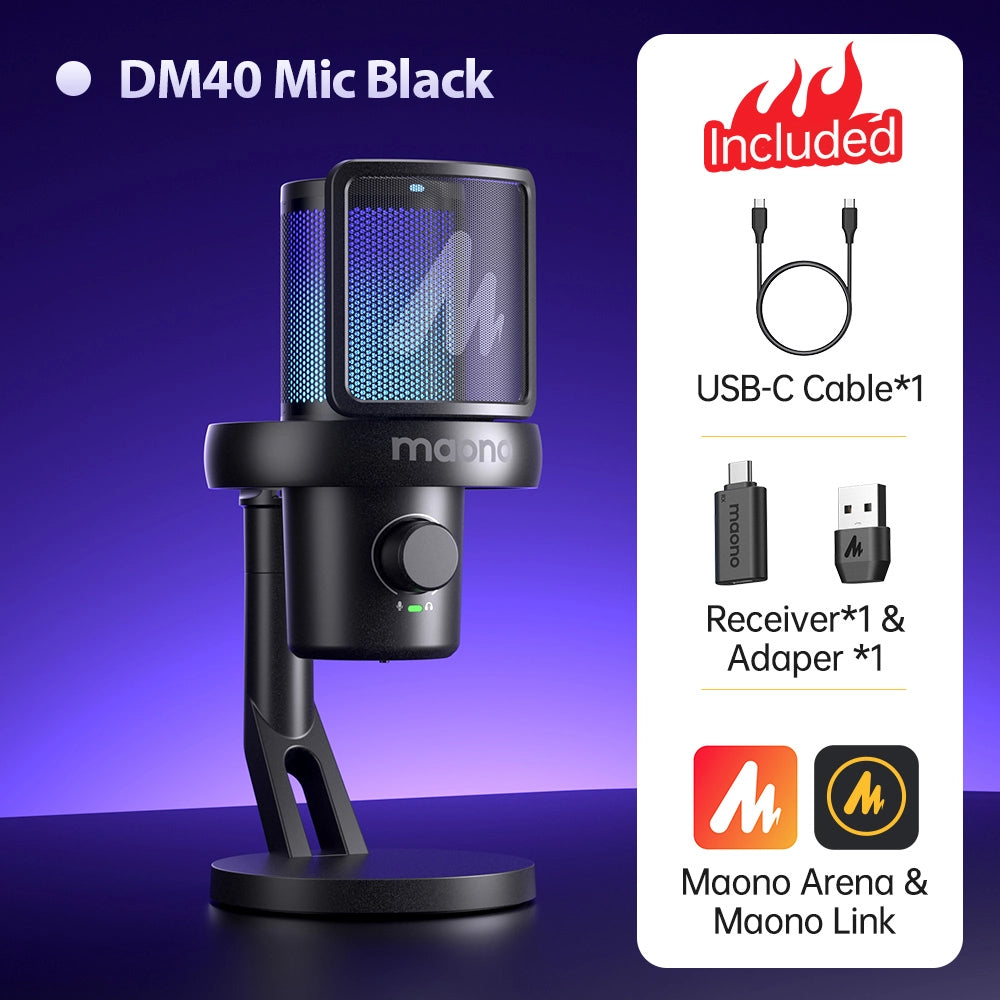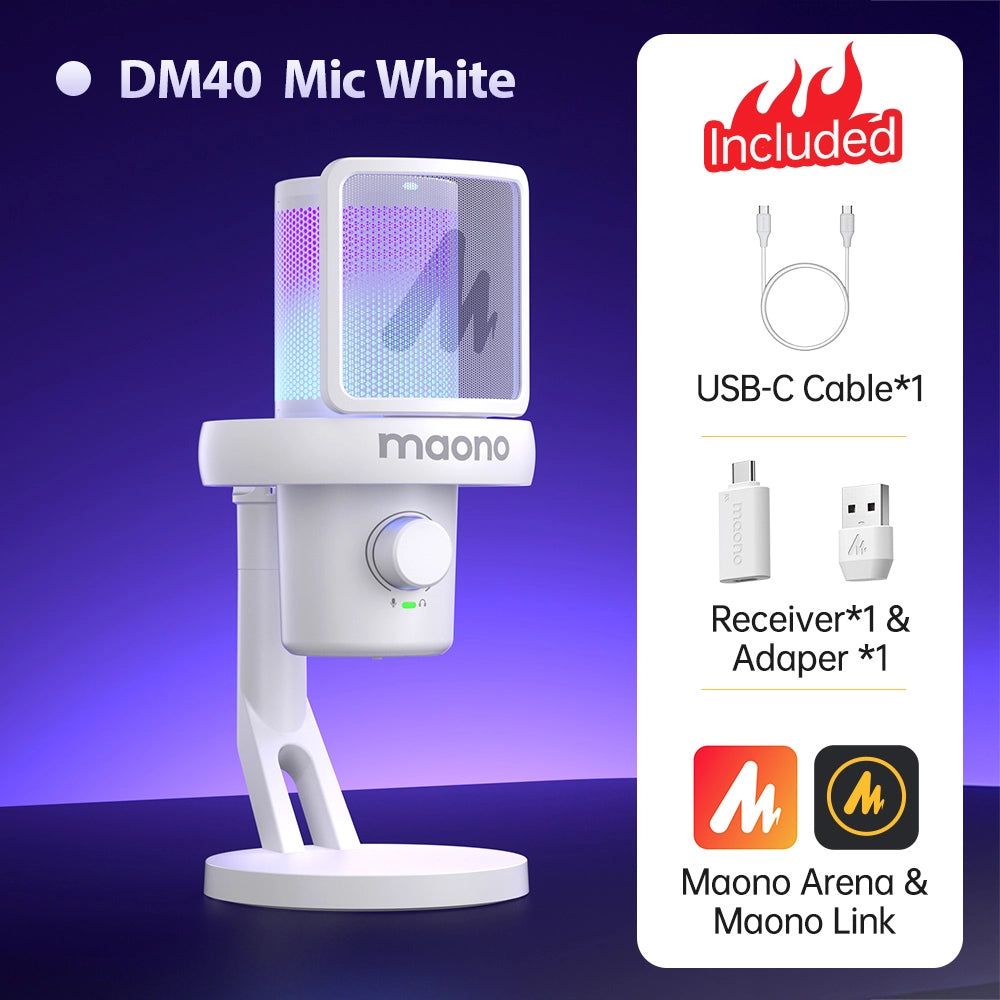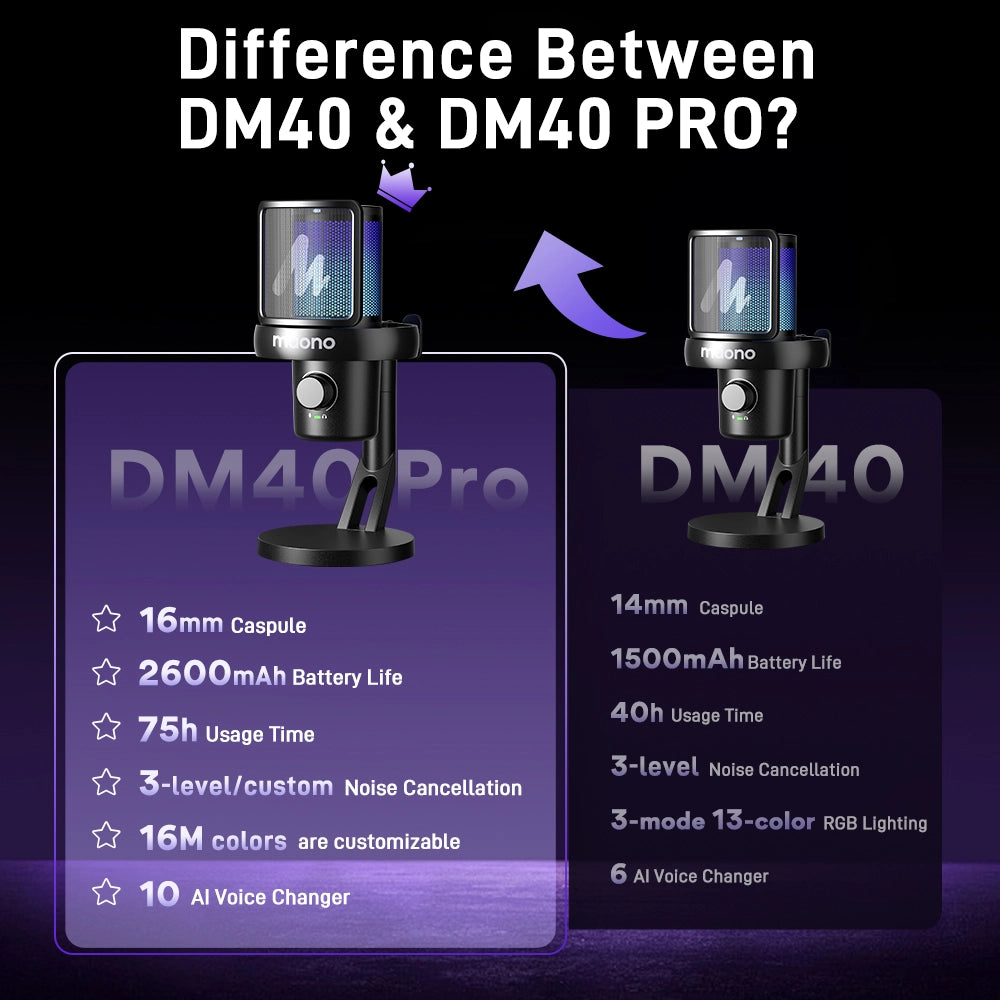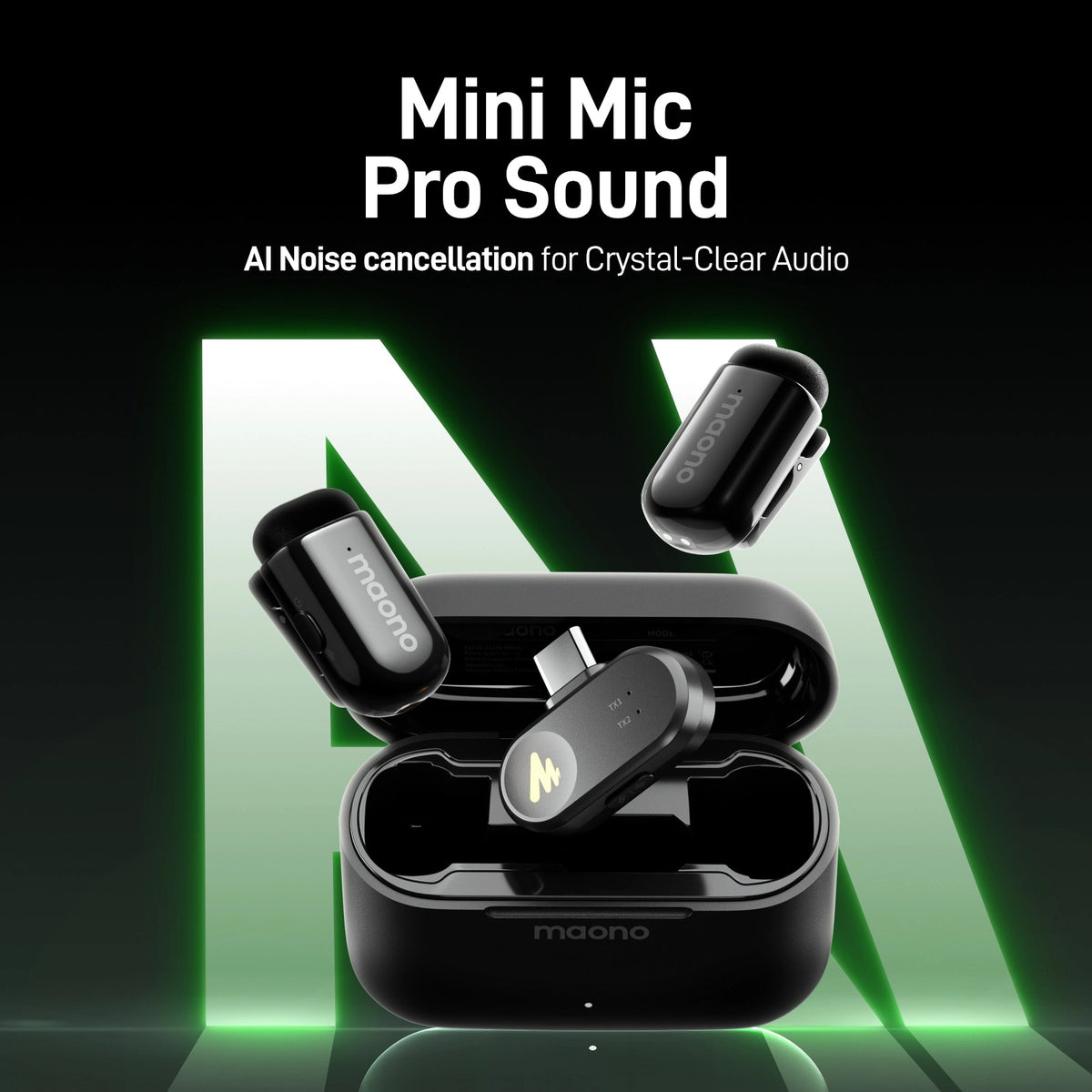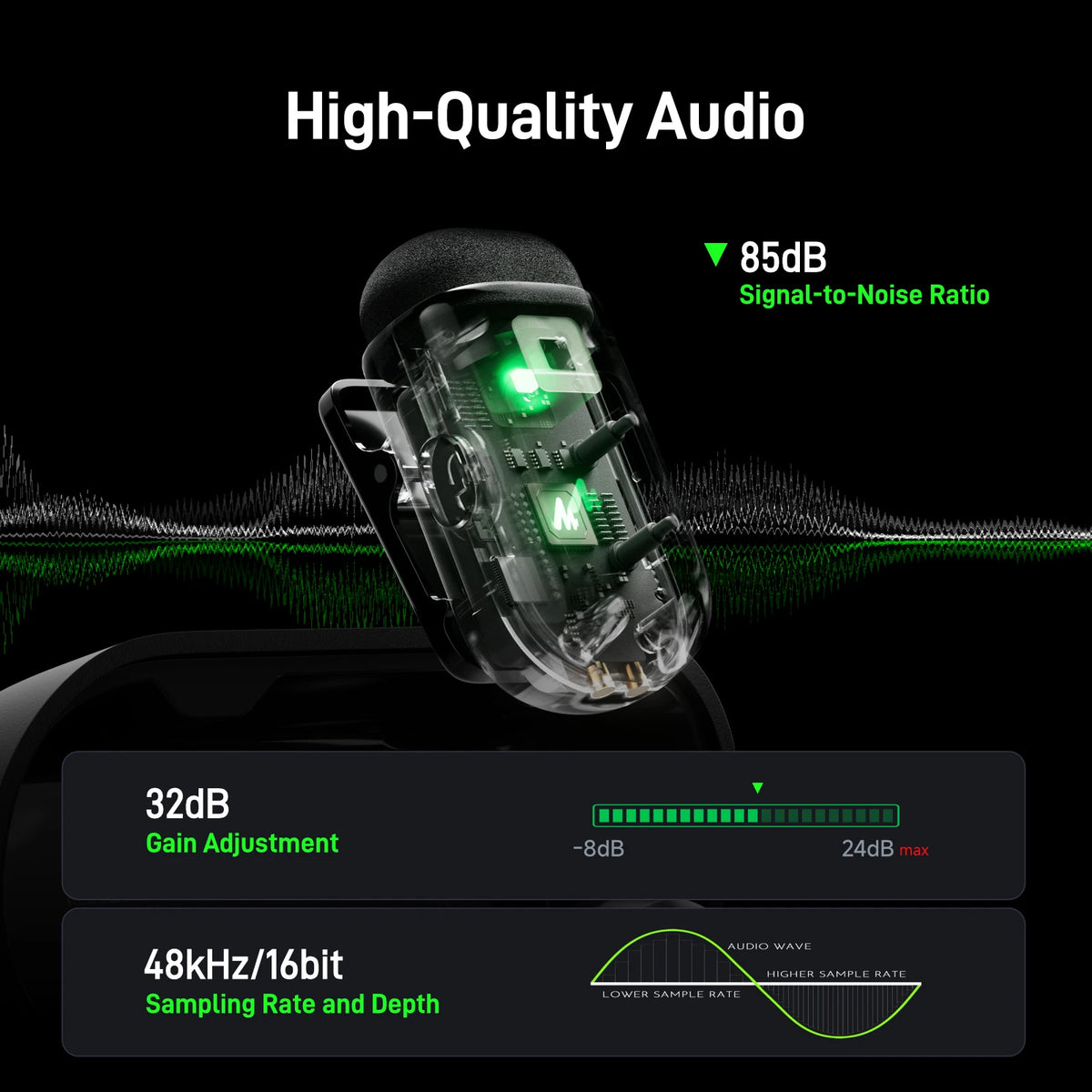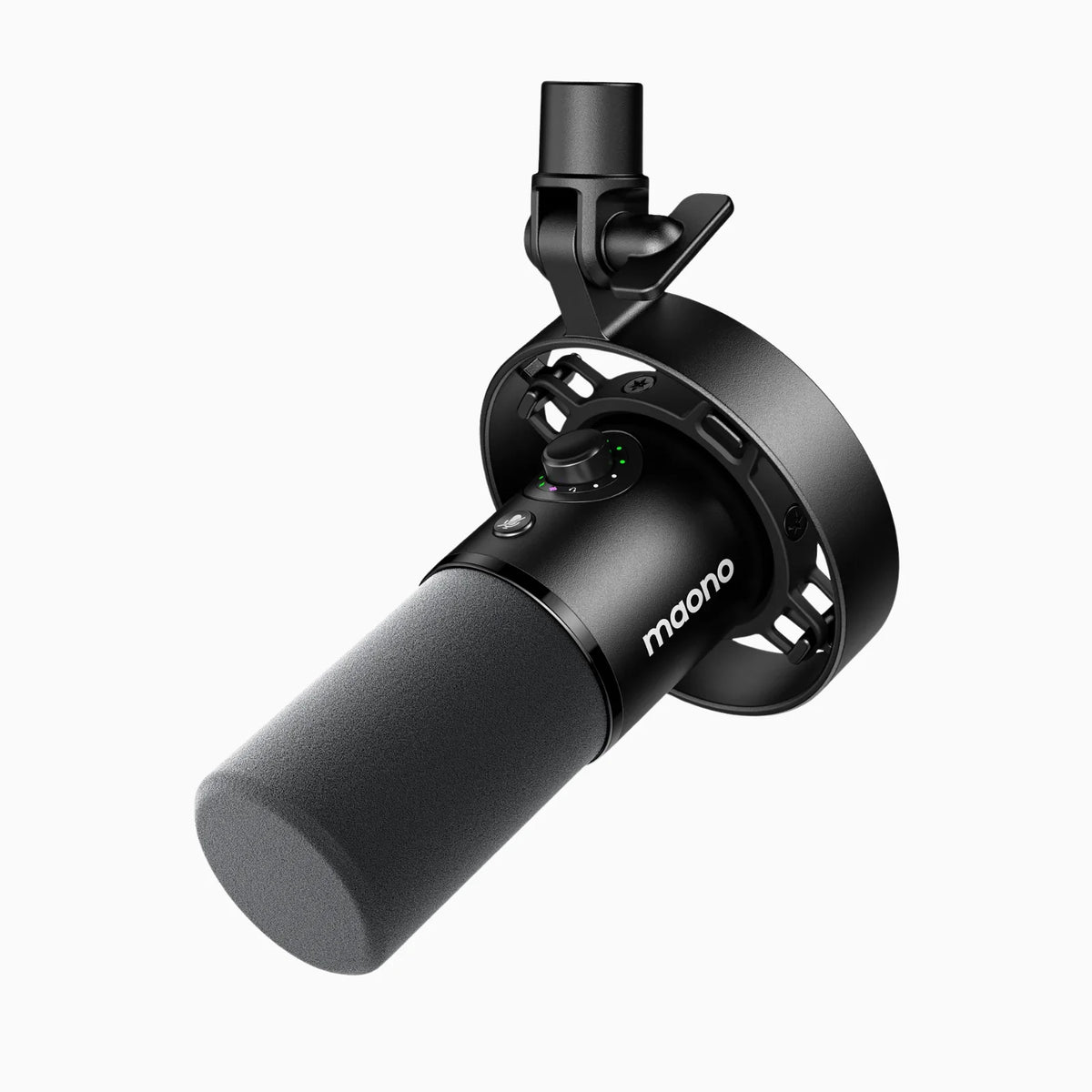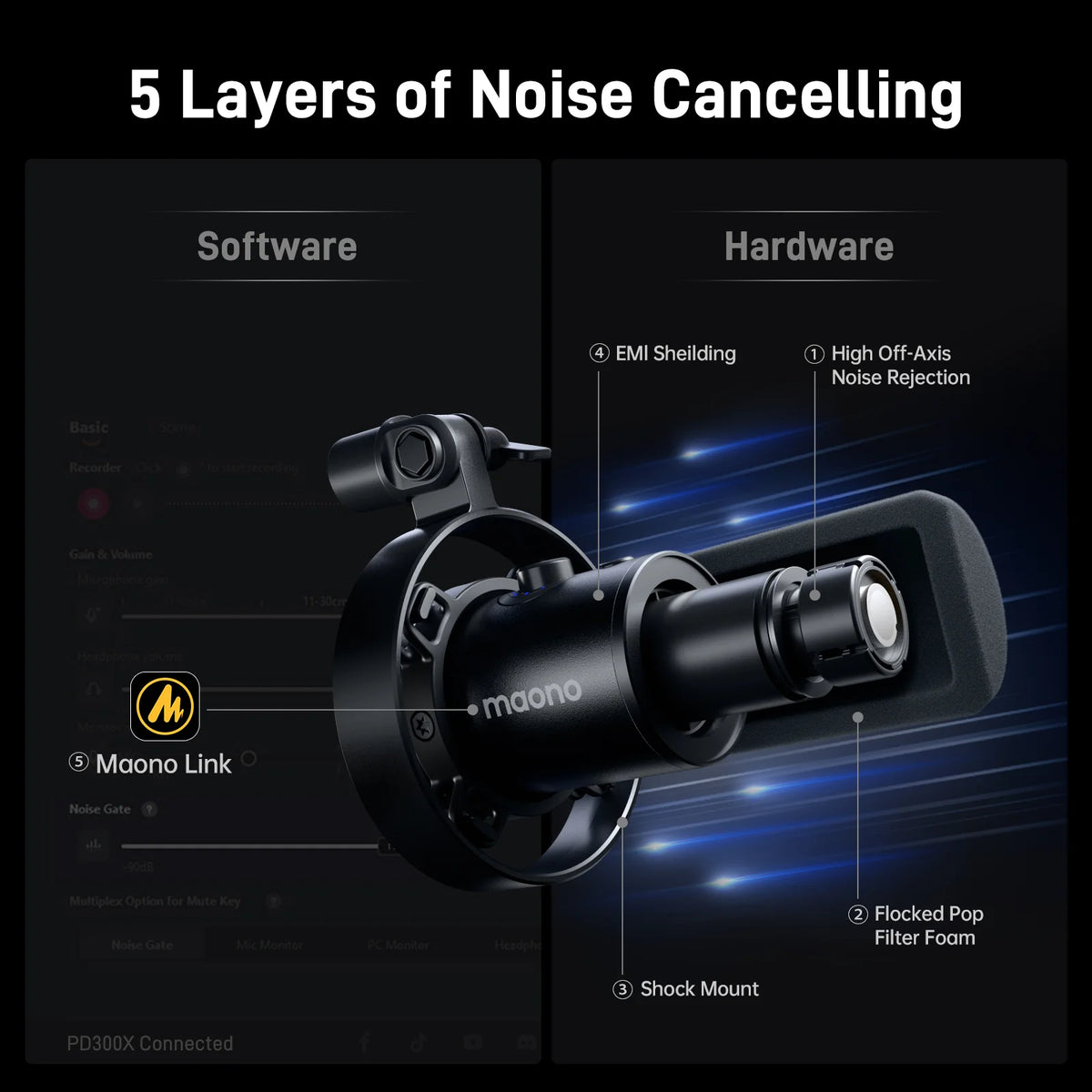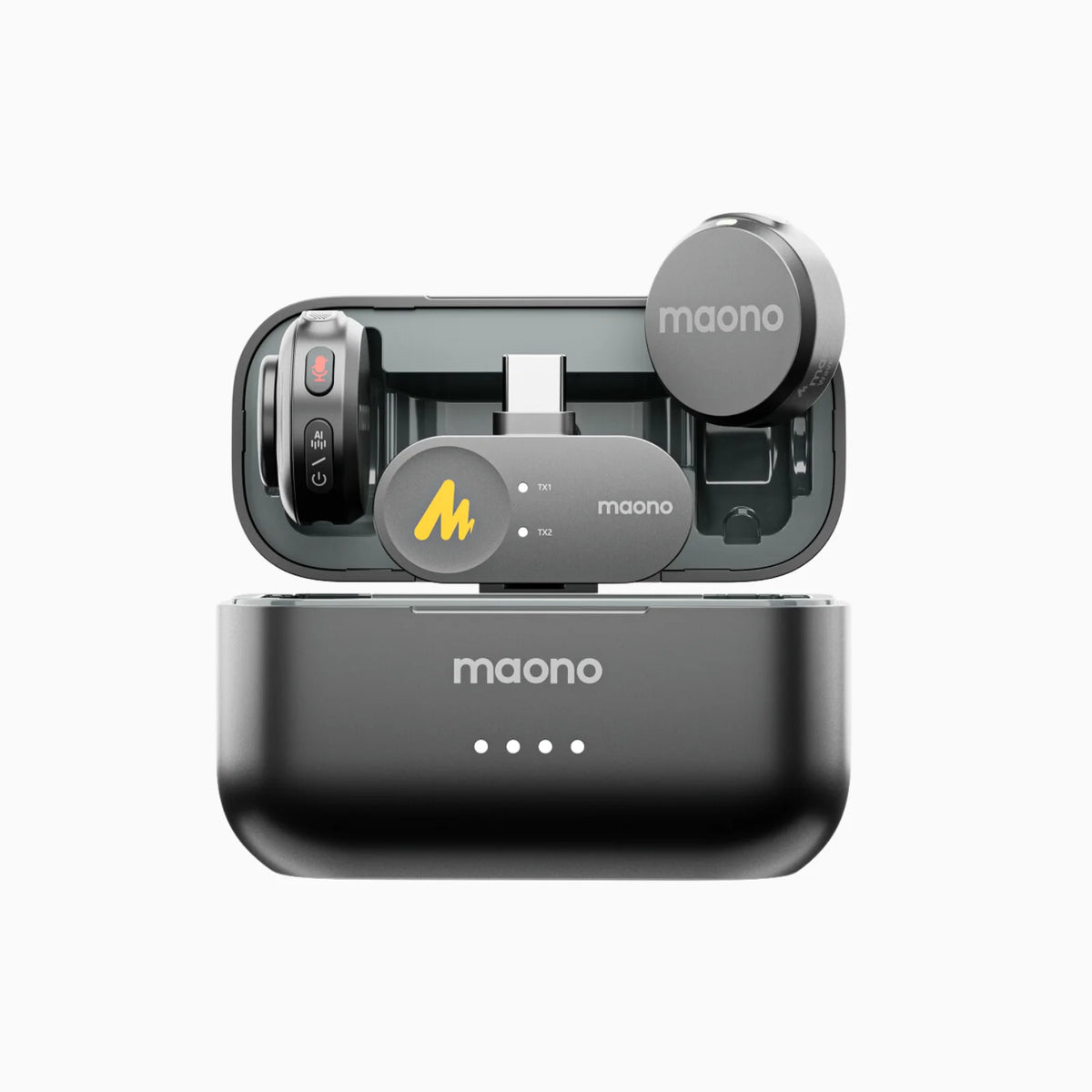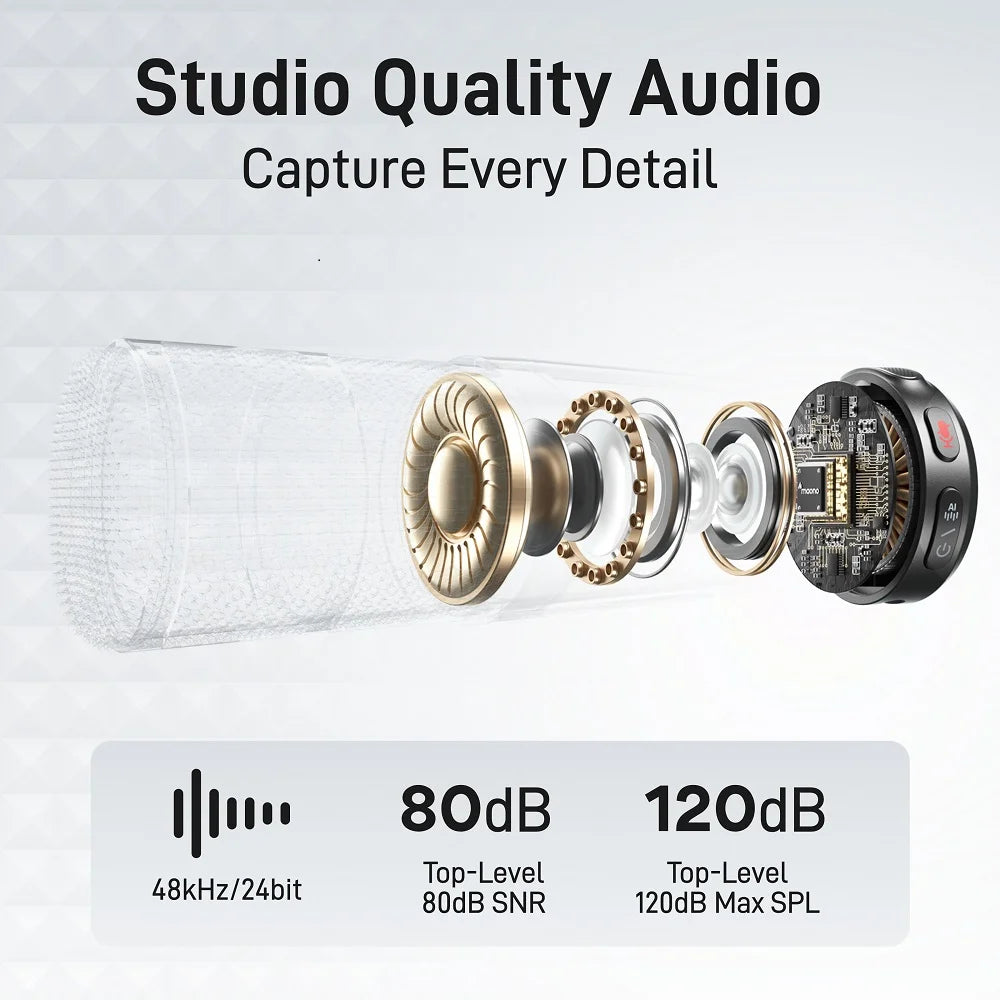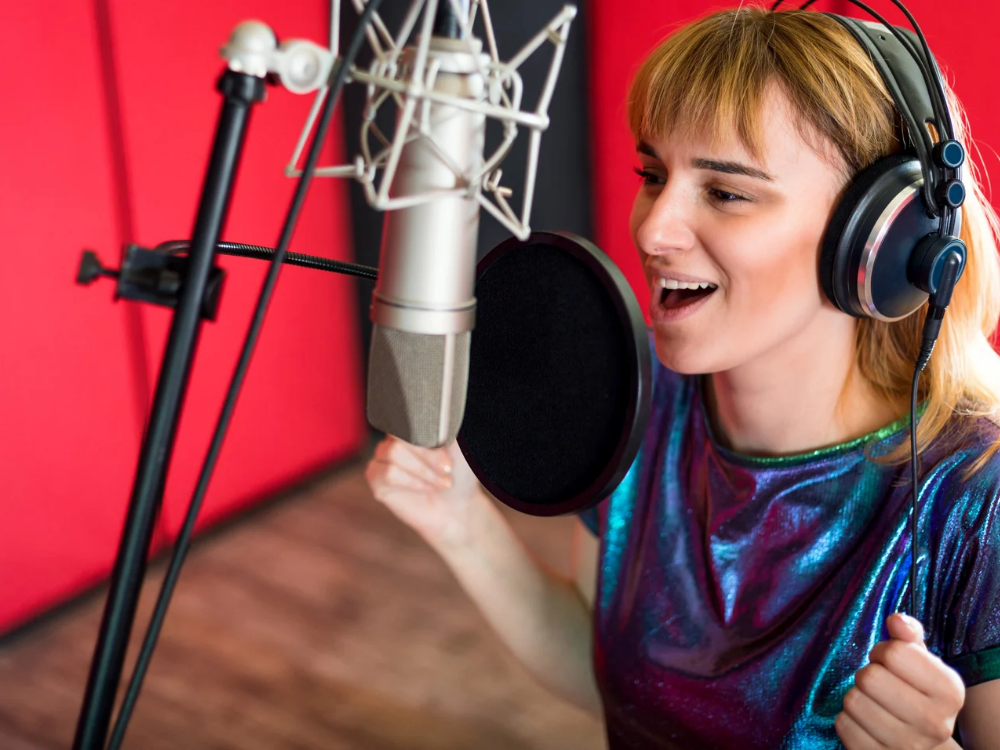Is it your first time to hear about an XLR dynamic microphone? For anyone serious about audio quality, the XLR dynamic microphone is more than just a tool—it's the key to unlocking professional sound in any setting. Whether you're capturing the raw energy of a live performance or the detailed tones of a studio recording, understanding what makes these microphones stand out can elevate your work to new heights.
In audio recording and live sound, the choice of microphone can significantly impact the quality of your output. Among various types of microphones, an XLR dynamic microphone stands out for its durability, versatility, and superior sound capture. This article will explore what XLR dynamic microphones are, their applications, the reasons behind their XLR connectors, and which models are the best options for professional use in 2024.
What is an XLR Dynamic Microphone?
An XLR dynamic microphone is a type of microphone that utilizes a dynamic transducer design and connects to audio equipment via a three-pin XLR connector. Unlike condenser microphones, dynamic microphones rely on electromagnetic induction to convert sound waves into electrical signals. This design makes them less sensitive to quiet sounds but highly effective at capturing loud sound sources, making them ideal for various applications.
What is a Dynamic XLR Microphone Used For? What Scenarios Do You Use These Microphones For?
Dynamic XLR microphones are widely used in both studio and live environments. They excel in situations where high sound pressure levels are present, making them perfect for:
- Live Vocals: Many singers and performers prefer dynamic microphones for live performances due to their robustness and ability to handle loud sound levels without distortion.
- Instruments: Dynamic microphones are often used to capture instruments like drums, electric guitars, and brass instruments, where they can effectively handle the dynamic range.
- Broadcasting and Podcasting: The clarity and reliability of dynamic XLR microphones make them popular choices for radio hosts, podcasters, and voice-over artists.
- Public Speaking: Their durability and ability to minimize background noise make dynamic microphones excellent for speeches and presentations.
Why Do Some Dynamic Microphones Have Exclusive XLR Connectors?
The exclusive use of XLR connectors in dynamic microphones is primarily due to their advantages in professional audio settings. XLR connectors provide a balanced audio signal, which helps to reduce interference and noise during transmission. This is especially crucial in live sound environments, where multiple cables and electronic devices can introduce hum and noise. Also, XLR connectors are designed to be robust and secure, ensuring a reliable connection even in high-usage situations.
How Do Dynamic Microphones Passively Invert the Signal for Balanced Output?
Dynamic microphones utilize a technique called "differential signaling" to achieve balanced output. In a balanced audio signal, the microphone generates two signals: one that is in phase with the sound wave and another that is inverted. This is achieved through the microphone's internal circuitry.
When these two signals travel along the balanced cable, such as an XLR microphone cable, any external noise or interference is picked up equally by both lines. At the receiving end, the two signals are combined in a way that cancels out the noise, resulting in a cleaner and clearer audio signal. This is particularly beneficial for long cable runs, where noise is more likely to be introduced.
What's the Best XLR Dynamic Microphone Between $50 and $400? Why?
Choosing the best dynamic XLR microphone within the $50 to $400 range can be subjective, as it largely depends on the intended use. However, here are some top contenders that stand out for their quality and versatility:
1. Shure SM7B
- Price: Approximately $399
- Why? The Shure SM7B is a legendary microphone known for its versatility and rich, warm sound. It excels in studio vocals, broadcasting, and instruments. Its built-in air suspension system minimizes mechanical noise, making it ideal for close-mic applications.
2. Shure SM57
- Price: Approximately $99
- Why? The Shure SM57 is an industry standard for instrument recording and live sound. Its rugged construction and ability to handle high SPL make it perfect for miking guitars, snare drums, and more. It’s also versatile enough for vocals.
3. Telefunken M80
- Price: Approximately $249
- Why? The Telefunken M80 offers a modern twist on the dynamic microphone, providing excellent clarity and a frequency response that suits a wide range of applications. It’s particularly effective for vocals in live settings, with a sensitivity that captures nuance.
4. sE Electronics V7
- Price: Approximately $99
- Why? The sE Electronics V7 is designed for vocals, featuring a supercardioid pickup pattern that minimizes background noise. It has a smooth frequency response and robust build, making it great for both live performance and studio work.
5. Shure SM58
- Price: Approximately $99
- Why? The Shure SM58 is one of the most popular vocal microphones globally. Its reliability, excellent frequency response, and built-in pop filter make it ideal for live vocals. It's a go-to for many performers due to its ruggedness and sound quality.
6. Tonor TC20
- Price: Approximately $50
- Why? The Tonor TC20 is an affordable option that doesn’t compromise on sound quality. It’s versatile for both vocals and instruments and comes with a shock mount and pop filter, making it an excellent starter microphone for aspiring podcasters and musicians.
7. Maono PM320

- Price: Approximately $65.99
- Why? Exceptional Sound Quality: The AU-PM320 features a cardioid pickup pattern that captures clear and detailed audio while minimizing background noise, making it ideal for vocals and instruments.
- Durability and Design: Its rugged construction ensures it can withstand the rigors of live performances and studio sessions alike, while its sleek design looks great on any mic stand.
- Value for Money: Offering high-quality sound at an accessible price point, it provides excellent performance that rivals more expensive models, making it a great choice for beginners and professionals.
8. Maono PD100

- Price: Approximately $79.99
- Why? Maono PD100 is one of the best dynamic microphone XLRs on the market due to its professional sound quality, featuring a cardioid pickup pattern that effectively isolates vocals while minimizing background noise. Its durable construction ensures it can withstand both studio and live settings, making it reliable for various applications. Additionally, the microphone offers excellent value for money, providing high-quality audio performance at an affordable price, ideal for podcasters and content creators.
FAQs
1. What Are the Benefits of Using an XLR Dynamic Microphone Over a USB Microphone?
Using an XLR dynamic microphone offers several advantages:
- Audio Quality: XLR microphones often provide superior sound quality, especially in professional environments where high fidelity is crucial.
- Flexibility: XLR microphones can be connected to various audio interfaces, mixers, and preamps, giving users more control over their sound.
- Durability: Dynamic microphones are typically more robust and resistant to environmental factors, making them ideal for live performances.
- Long Cable Runs: XLR cables support longer distances without signal degradation, unlike many USB microphones.
2. What Are the Advantages of XLR Microphones in Terms of Audio Quality, Flexibility, and Professional Use?
XLR microphones offer:
- Balanced Audio: The balanced output helps reduce noise and interference, ensuring cleaner audio, especially in complex setups.
- Professional Standards: Most professional audio setups use XLR microphones, making them compatible with studio equipment and soundboards.
- Interchangeability: You can easily switch between different microphones and audio interfaces, allowing for greater flexibility in sound design.
3. Can I Use a Maono XLR Dynamic Microphone for Live Streaming?
Yes, Maono XLR dynamic microphones are suitable for live streaming. They provide excellent sound quality and are often designed to minimize background noise, making them effective for capturing clear audio in various settings. Whether you're using it for podcasting or streaming gameplay, a Maono microphone can enhance your audio experience.
Final Thoughts
In 2024, the best XLR dynamic microphones between $50 and $400 provide exceptional sound quality and versatility for professional use. From the iconic Shure SM7B to the budget-friendly Maono PM320 or PD100, there are options for every application, whether you're recording in a studio, performing live, or streaming content. Choosing the right microphone can elevate your audio quality, enhance your recordings, and improve your overall production value. Investing in a quality XLR dynamic microphone is a step toward achieving professional results in your audio endeavors.










